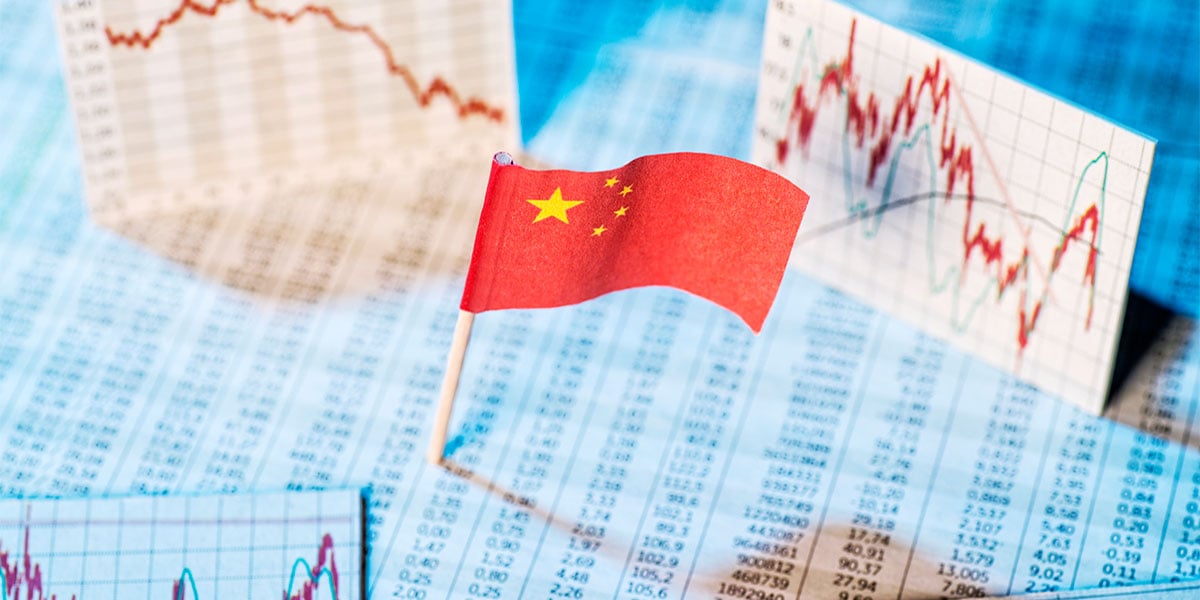Download the PDF

Chinese authorities unveil coordinated policy support
Economic momentum has continued to slide in China over recent months. Following the disappointing Q2 national accounts, which revealed a slowdown in year-ended real GDP growth from 5.3% to 4.7%, incoming partial data suggested a continued loss of momentum over the September quarter. Property market headwinds are weighing heavily on the economy, and concerningly, evidence is building that the property correction is starting to lead to more cautious behaviour from Chinese consumers.
With the economy looking like it would miss authorities’ 2024 real GDP growth target of around 5%, policymakers unleashed a raft of measures last week to prop up the economy and support the ailing property market. In a coordinated policy move, the People’s Bank of China, other financial regulators and the central government unveiled a series of measures to more proactively support the economy and “strive to achieve the full-year growth targets.” In a way, the more decisive action conjured up memories of Mario Draghi’s “whatever it takes” moment that was the circuit breaker needed to end the European debt crisis.
Has President Xi just done the same to end the Chinese property crisis? There are some reasons to be optimistic. The co-ordinated policy response from Chinese authorities sends a clear signal that they have seen enough. The fact that September’s Politburo meeting focussed on the economy, rather than the typical April, July and December cycle, highlights the increased focus and concern emerging from the Chinese leadership. Financial markets welcomed the policy support, with the CSI 300 jumping 27% from its lows to reach 1-year highs.
While all the precise details of the government’s fiscal and property plans are yet to emerge, we have already witnessed a raft of stimulus measures. On the monetary policy side, these include a decision to lower key policy rates by 20bps, provide liquidity injections into the financial system via a 50bp cut in the reserve requirement ratio and a hint at further cuts later in the year. On the financial stability front, policymakers announced an unprecedented RMB 500 billion backstop for the equity market and RMB 300 billion in cheap PBOC loans to commercial banks to help fund share purchases and buybacks.
On the property front, a myriad of policies was unveiled to provide support to the embattled real estate market, including measures to reduce home purchase restrictions, lower rates on existing mortgages, expand a whitelist of housing projects that can receive further financing and support for local state-owned enterprises to purchase unsold homes to convert into affordable housing. On the fiscal policy side, the Politburo highlighted a commitment to launch further fiscal measures to boost consumption and employment.
Reuters’ reports, citing officials with knowledge of the matter, suggest Chinese authorities plan to issue RMB 2 trillion in special sovereign bonds, with potentially RMB 1 trillion being used to inject capital into large state-owned banks. While sizeable, RMB 2 trillion would represent 1.6% of GDP, it remains a far cry from the 12% of GDP package unleashed in 2009 after the GFC.
Although the measures announced eclipsed expectations and helped boost equity markets and commodity prices, the policies revealed to date are largely designed to provide a counter-cyclical boost to the economy. We are not yet convinced that Chinese authorities have done whatever it takes to address the structural problems plaguing the property market. That’s not to say they won’t come given policymakers increased focus, but a comprehensive plan to stabilise the housing market and restructure embattled property developers is still lacking in our view.
Until Chinese authorities accelerate the winding-up of insolvent developers and find a solution for homebuyers of pre-sold, but unfinished homes from these developers, then a lack of confidence will continue to undermine the property market. A plan to help solvent developers moving forward, potentially via some government backstopped guarantees is also likely to be required. Ultimately, a good bank (good property developer)/bad bank (bad property developer) government facilitated restructuring appears required for the Chinese property sector to turn the corner.
Notwithstanding our view that Chinese authorities have not adequately addressed the property crisis, the more aggressive counter-cyclical policy easing over coming months should help the economy pick-up pace in the December quarter. We expect real GDP growth to average 4.8% in 2024, which authorities are likely to claim meets their target of “around 5%.” Given deteriorating demographic trends and ongoing property market headwinds, we expect real GDP growth to slow further to around a 4½% pace in 2025. This is not set in stone, however, and authorities still have an opportunity to do whatever it takes.
